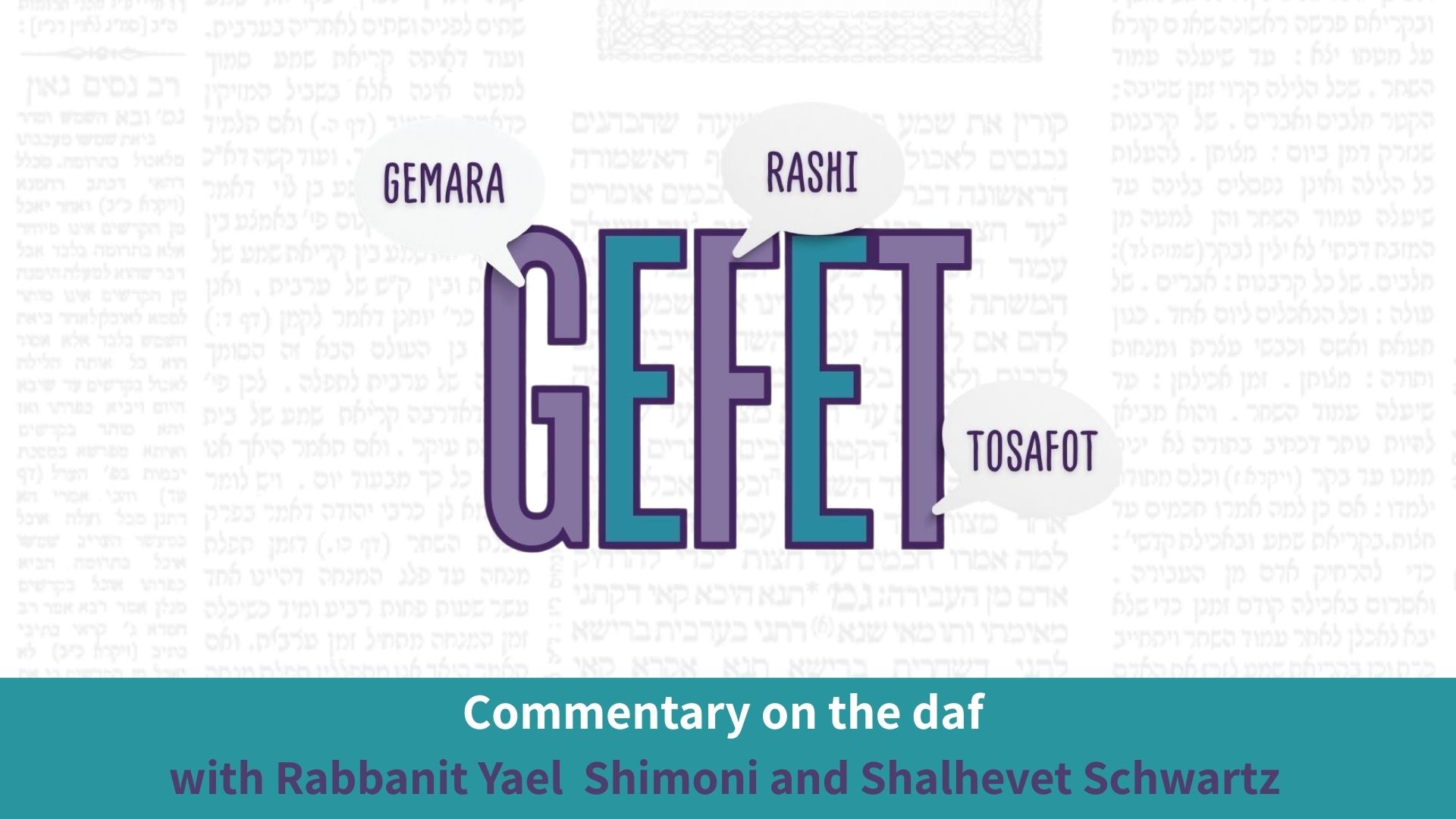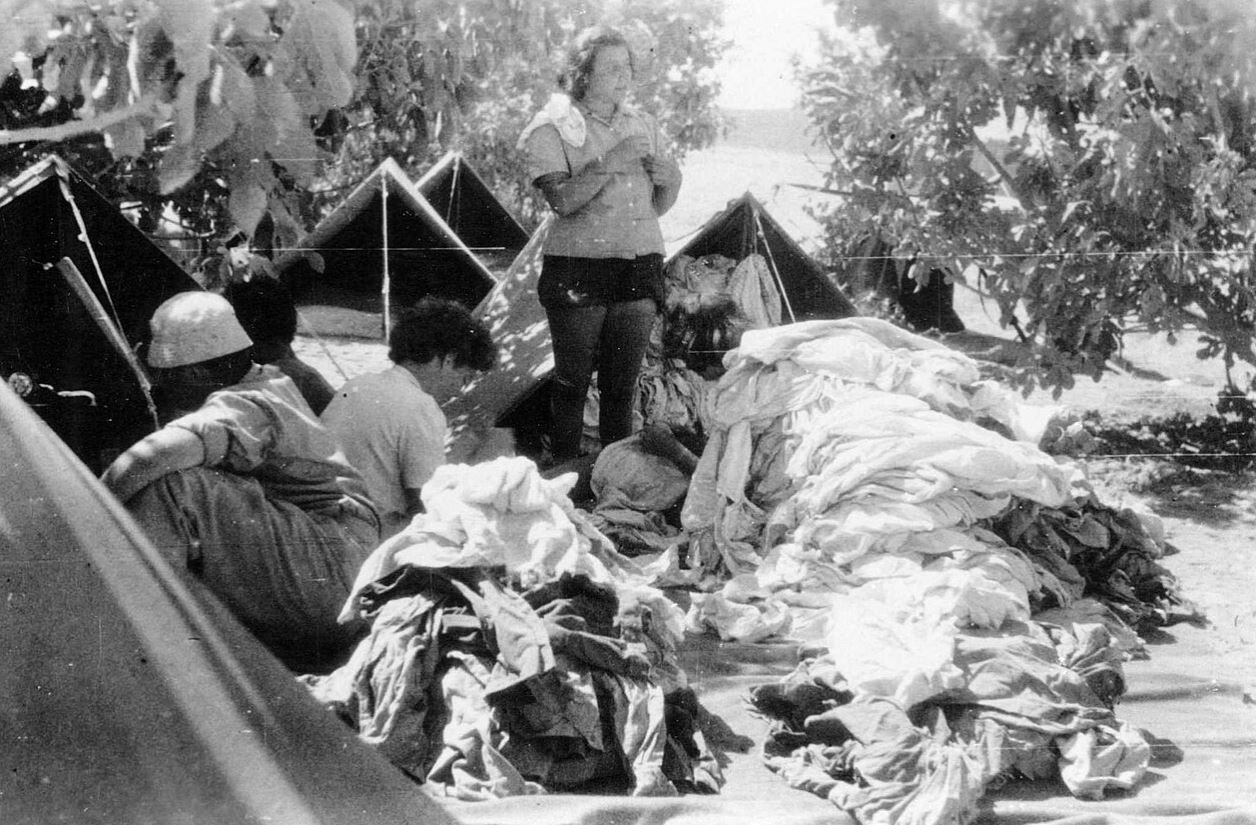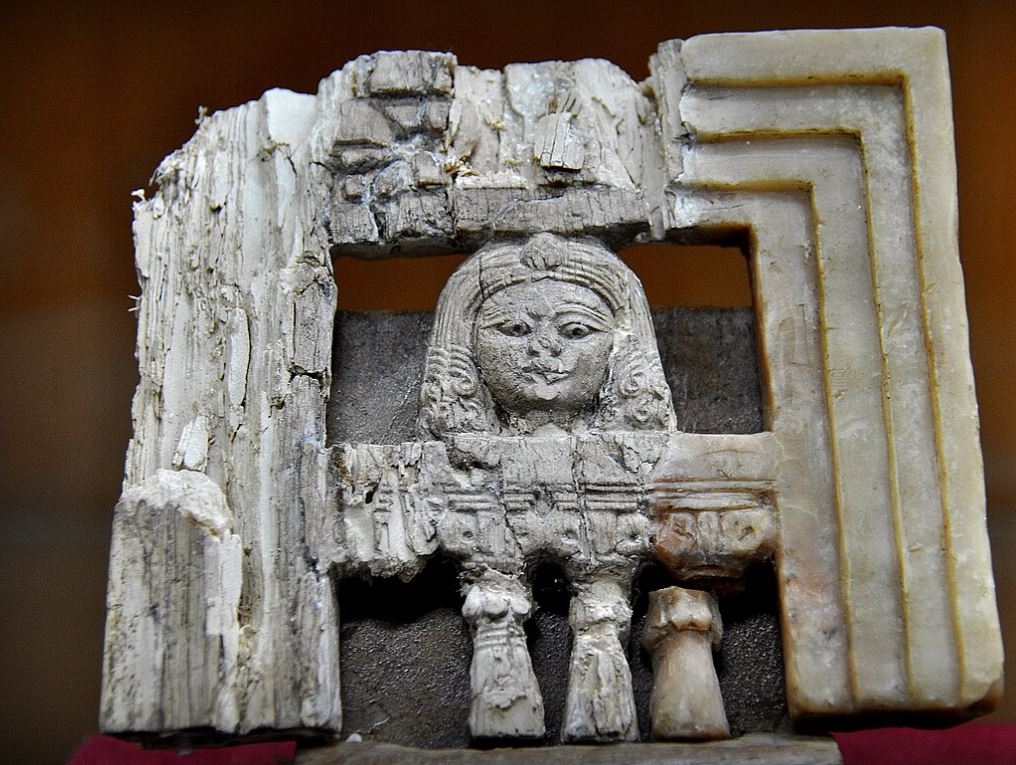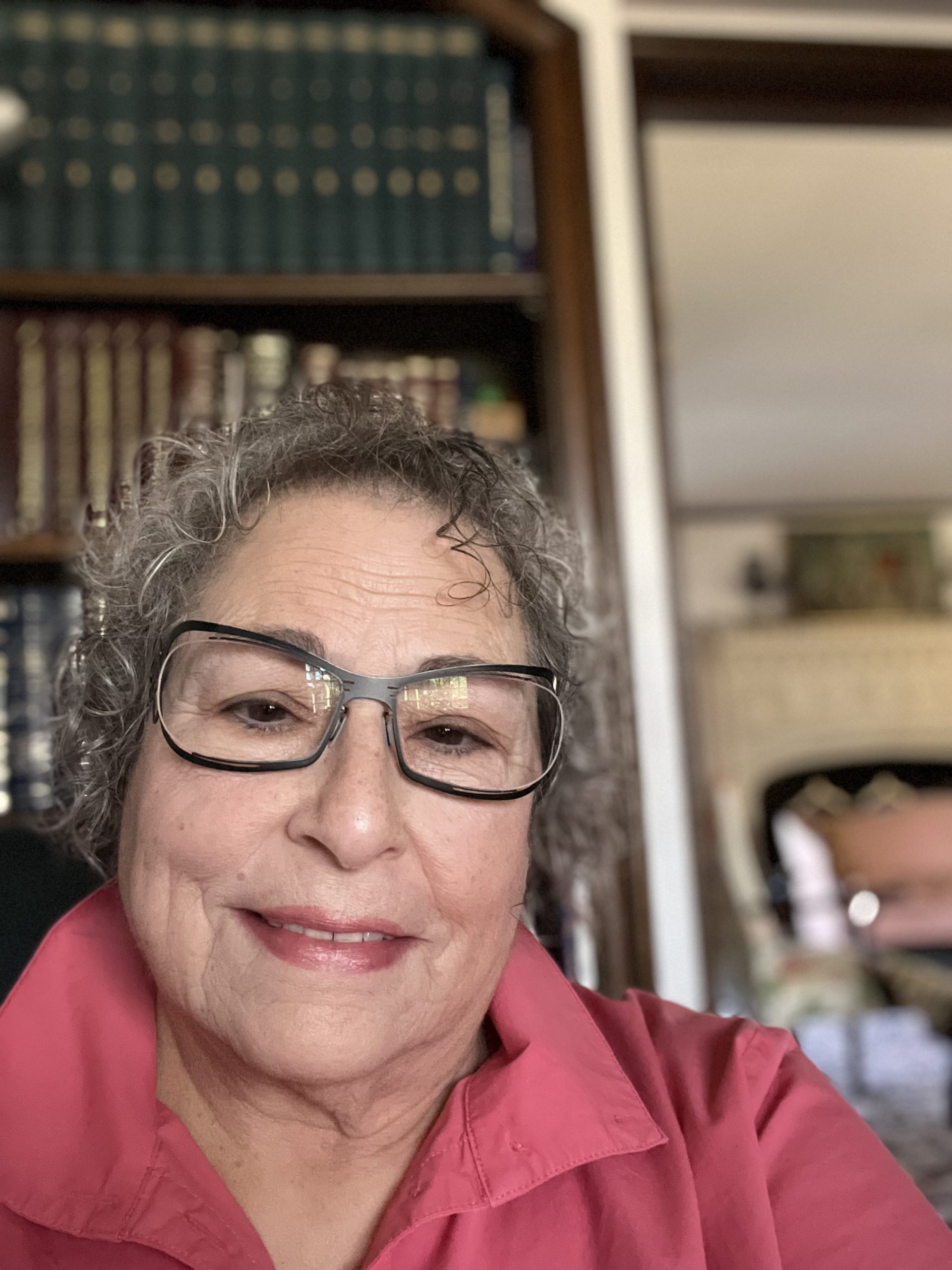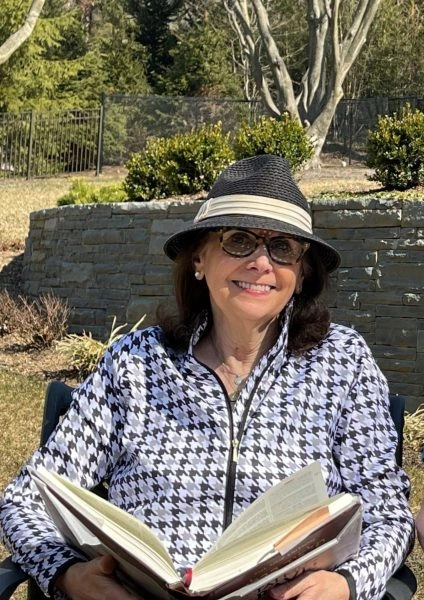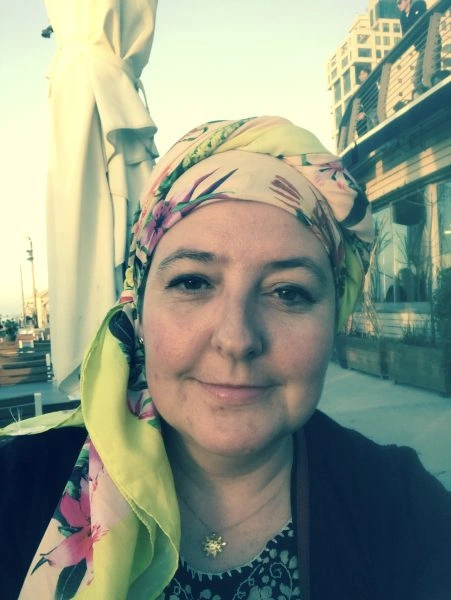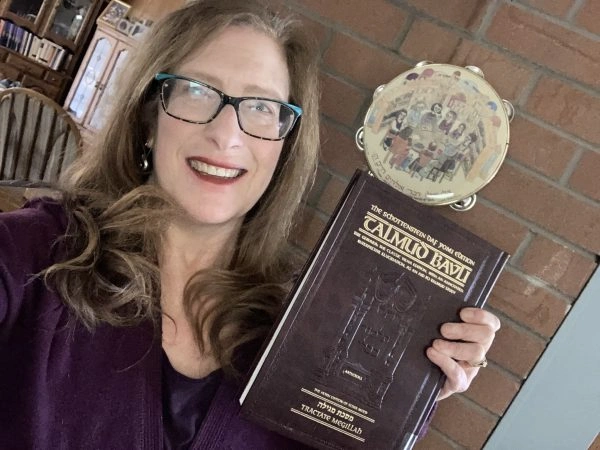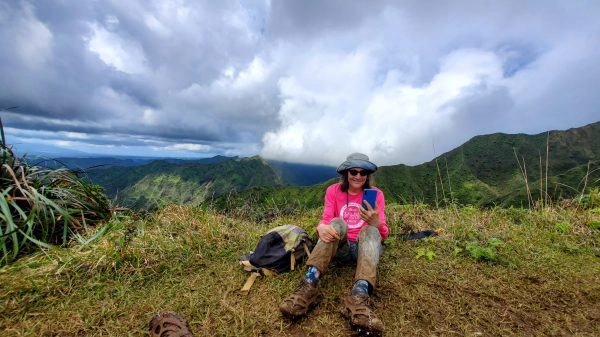If one buys the produce of a dovecote, a beehive, a honeycomb, or a tree for its wood, the buyer is entitled to the produce but must leave a certain amount for the seller to ensure continued growth. The Mishna and Gemara discuss the amounts for each item. Rav Kahana explained that honey while still in the honeycomb is considered food and is susceptible to impurity, even if the bees are eating it. However, in a braita, the opposite ruling is brought. Abaye and Rava resolve the contradiction each differently and the Gemara raises two difficulties against Rava’s ruling. A braita is brought in support of Rav Kahan’s ruling. A braita expands on the law in the Mishna regarding trees sold for their wood and distinguishes between different trees and the amounts that need to be left to ensure regrowth. Some sources are brought that contradict some laws in the braita but are resolved.
Bava Batra
Masechet Bava Batra is sponsored by Lori Stark in loving memory of her mother in law, Sara Shapiro z”l and her father Nehemiah Sosewitz z”l.
This month’s learning is sponsored by Beth Balkany in honor of their granddaughter, Devorah Chana Serach Eichel. “May she grow up to be a lifelong learner.”
This month’s learning is dedicated in memory of Rabbi Dr. Raymond Harari z”l, on the occasion of his first yahrzeit. Over the course of his distinguished career as an educator, as principal of the Yeshiva of Flatbush, and as community rabbi, he inspired thousands of students with his wisdom, warmth, and unwavering commitment to Torah.
This week’s learning is sponsored by Mark and Rena Goldstein for refuah shleima of Ben Ezra Septee ben Rena and Aliza Margalit bat Shaina Raya.
Want to dedicate learning? Get started here:

Bava Batra
Masechet Bava Batra is sponsored by Lori Stark in loving memory of her mother in law, Sara Shapiro z”l and her father Nehemiah Sosewitz z”l.
This month’s learning is sponsored by Beth Balkany in honor of their granddaughter, Devorah Chana Serach Eichel. “May she grow up to be a lifelong learner.”
This month’s learning is dedicated in memory of Rabbi Dr. Raymond Harari z”l, on the occasion of his first yahrzeit. Over the course of his distinguished career as an educator, as principal of the Yeshiva of Flatbush, and as community rabbi, he inspired thousands of students with his wisdom, warmth, and unwavering commitment to Torah.
This week’s learning is sponsored by Mark and Rena Goldstein for refuah shleima of Ben Ezra Septee ben Rena and Aliza Margalit bat Shaina Raya.
Delve Deeper
Broaden your understanding of the topics on this daf with classes and podcasts from top women Talmud scholars.
New to Talmud?
Check out our resources designed to help you navigate a page of Talmud – and study at the pace, level and style that fits you.
The Hadran Women’s Tapestry
Meet the diverse women learning Gemara at Hadran and hear their stories.
Bava Batra 80
מַתְנִי׳ הַלּוֹקֵחַ פֵּירוֹת שׁוֹבָךְ מֵחֲבֵירוֹ – מַפְרִיחַ בְּרִיכָה רִאשׁוֹנָה. פֵּירוֹת כַּוֶּורֶת – נוֹטֵל שְׁלֹשָׁה נְחִילִים, וּמְסָרֵס. חַלּוֹת דְּבַשׁ – מַנִּיחַ שְׁתֵּי חַלּוֹת. זֵיתִים לָקוֹץ – מַנִּיחַ שְׁתֵּי גְרוֹפִיּוֹת.
MISHNA: One who buys the produce of a dovecote from another, i.e., the doves that will hatch over the course of the year in a dovecote, must leave [mafriaḥ] the first pair of doves from the brood for the seller. If one buys the produce of a beehive, i.e., all the bees produced from a beehive over the course of the year, the buyer takes three swarms and then the seller renders the bees impotent, so that they will stop producing offspring and instead produce only honey. One who buys honeycombs must leave two combs. If one buys olive trees for felling, he must leave two shoots for the seller.
גְּמָ׳ וְהָתַנְיָא: בְּרִיכָה רִאשׁוֹנָה וּשְׁנִיָּה! אָמַר רַב כָּהֲנָא: לָא קַשְׁיָא; הָא לַהּ, הָא לְאִמַּהּ.
GEMARA: The mishna teaches that one who buys the brood of a dovecote must leave the first pair of the brood for the seller. The Gemara asks: But isn’t it taught in a baraita that one must leave the first and the second pairs of a brood for the seller? Rav Kahana said: This is not difficult. This statement in the mishna is referring to the pair left for the first pair of the brood itself, i.e., an extra pair of doves must be left behind to ensure that the first brood will not fly away. That statement of the baraita is referring to a pair left for the mother of the pair discussed in the mishna. In other words, the baraita is saying that one must leave a pair of doves for the mother, and later a second pair from the brood of her children, which is the pair mentioned by the mishna.
מַאי שְׁנָא אִמַּהּ – דְּמִיצְטַוְּותָא אַבַּרְתָּא וְאַזּוּגָא דְּשָׁבְקִינַן לַהּ; אִיהִי נָמֵי – תִּיצְטַוַּות אַאִמַּהּ, וְאַזּוּגָא דְּשָׁבְקִינַן לַהּ! אִמַּהּ אַבַּרְתָּא מִיצְטַוְּותָא, בְּרַתָּא אַאִמַּהּ לָא מִיצְטַוְּותָא.
The Gemara asks: What is different about the mother that there is no concern that she will escape from the dovecote? If the reason is that she is attached to her daughter and the mate which one leaves for her, this should also be true with regard to the daughter, i.e., she too will become attached to her mother and the mate which one leaves for her. Why, then, is it necessary to leave behind a pair of the daughter’s own brood to ensure that the daughter will not leave? The Gemara answers: A mother is attached to her daughter, whereas a daughter is not attached to her mother. Therefore, in order for the daughter to remain in the dovecote it is necessary to leave the daughter’s brood with her.
פֵּירוֹת כַּוֶּורֶת – נוֹטֵל שְׁלֹשָׁה נְחִילִין, וּמְסָרֵס. בַּמֶּה מְסָרְסָן? אָמַר רַב יְהוּדָה אָמַר שְׁמוּאֵל: בְּחַרְדָּל. אָמְרִי בְּמַעְרְבָא מִשְּׁמֵיהּ דְּרַבִּי יוֹסֵי בַּר חֲנִינָא: לֹא חַרְדָּל מְסָרְסָן, אֶלָּא מִתּוֹךְ שֶׁפִּיהֶן חַד – חוֹזְרוֹת וְאוֹכְלוֹת אֶת דּוּבְשָׁנָן.
§ The mishna teaches that one who buys the produce of a beehive takes three swarms and then the seller renders the bees impotent [mesares]. The Gemara asks: By what means does he render them impotent? Rav Yehuda said that Shmuel said: He renders them impotent by feeding them mustard. They say in the West, Eretz Yisrael, in the name of Rabbi Yosei bar Ḥanina: It is not the mustard itself that renders them impotent. Rather, since their mouths sting from the bitterness of the mustard, they return and eat their own honey. Due to their excessive eating of honey, they cease to form new swarms and instead produce honey for the seller.
רַבִּי יוֹחָנָן אָמַר: נוֹטֵל שְׁלֹשָׁה נְחִילִין – בְּסֵירוּס. בְּמַתְנִיתָא תָּנָא: נוֹטֵל שְׁלֹשָׁה נְחִילִין בָּזֶה אַחַר זֶה, מִכָּאן וְאֵילָךְ – נוֹטֵל אַחַת וּמַנִּיחַ אַחַת.
Rabbi Yoḥanan says: This is not the meaning of mesares. Rather, the mishna should be understood as follows: One takes three swarms by skipping [beseirus] every other swarm, so that the buyer receives the first, third, and fifth swarms, while the others remain with the seller. It is taught in a baraita: The buyer takes the first three swarms one after the other, and from this point forward he takes one and leaves one.
חַלּוֹת דְּבַשׁ – מַנִּיחַ שְׁתֵּי חַלּוֹת וְכוּ׳. אָמַר רַב כָּהֲנָא: דְּבַשׁ בְּכַוֶּורֶת אֵינוֹ יוֹצֵא מִידֵי מַאֲכָל לְעוֹלָם. אַלְמָא קָסָבַר לָא בָּעֵי מַחְשָׁבָה.
§ The mishna teaches that one who buys honeycombs must leave two combs and one who buys olive trees for felling must leave two shoots. Rav Kahana says: As long as honey remains in the beehive it never leaves its status as food, i.e., it is always considered fit for human consumption. The Gemara notes: Apparently, Rav Kahana holds that honey does not require that one have intention to eat it for it to be susceptible to ritual impurity.
מֵיתִיבִי: דְּבַשׁ בְּכַוֶּורֶת – אֵינוֹ לֹא אוֹכֶל וְלֹא מַשְׁקֶה! אָמַר אַבָּיֵי: לָא צְרִיכָא אֶלָּא לְאוֹתָן שְׁתֵּי חַלּוֹת. רָבָא אָמַר: דְּרַבִּי אֱלִיעֶזֶר הִיא –
The Gemara raises an objection from a baraita: Honey in a beehive is not considered to have the status of either food or liquid with regard to ritual impurity. Abaye said: This halakha, that honey is considered neither food nor liquid, is necessary only with regard to those two combs mentioned in the mishna, which are designated for the sustenance of the bees and are not for human consumption. Rava said: The baraita is in accordance with the opinion of Rabbi Eliezer.
דִּתְנַן: כַּוֶּורֶת דְּבוֹרִים – רַבִּי אֱלִיעֶזֶר אוֹמֵר: הֲרֵי הִיא כַּקַּרְקַע, וְכוֹתְבִין עָלֶיהָ פְּרוֹזְבּוּל,
As we learned in a mishna (Shevi’it 10:7): Concerning a beehive, Rabbi Eliezer says: It is considered like land with regard to the manner in which one purchases it and with regard to other matters, and therefore one writes a document that prevents the Sabbatical Year from canceling an outstanding debt [prosbol] based on it, as a prosbol can be written only if the debtor possesses land of some sort.
וְאֵינָהּ מְקַבֶּלֶת טוּמְאָה בִּמְקוֹמָהּ, וְהָרוֹדֶה מִמֶּנָּה בְּשַׁבָּת – חַיָּיב חַטָּאת.
And a beehive is not susceptible to ritual impurity, provided that it is in its place and attached to the ground, as it is considered equivalent to the ground itself, which is not susceptible to impurity. And one who takes honey out of it on Shabbat is liable to bring a sin-offering, like one who uproots something from the ground. According to this opinion, honey in a beehive is not considered to have the status of either food or liquid with regard to ritual impurity, as it is attached to the ground.
וַחֲכָמִים אוֹמְרִים: אֵין כּוֹתְבִין עָלֶיהָ פְּרוֹזְבּוּל, וְאֵינָהּ כַּקַּרְקַע, וּמְקַבֶּלֶת טוּמְאָה בִּמְקוֹמָהּ, וְהָרוֹדֶה מִמֶּנָּה בְּשַׁבָּת – פָּטוּר.
The mishna continues: And the Rabbis say: A beehive has the status of movable property; one may not write a prosbol based on it, and it is not considered like land with regard to its sale but is instead sold in the manner of movable property. And it is susceptible to ritual impurity even when it is in its place, and one who takes honey out of it on Shabbat is exempt from bringing a sin-offering. According to this opinion, the honey contained within the beehive is considered detached from the ground and is therefore susceptible to ritual impurity, as stated by Rav Kahana.
אָמַר רַבִּי אֶלְעָזָר: מַאי טַעְמָא דְּרַבִּי אֱלִיעֶזֶר? דִּכְתִיב: ״וַיִּטְבֹּל אוֹתָהּ בְּיַעְרַת הַדְּבָשׁ״ – וְכִי מָה עִנְיַן יַעַר אֵצֶל דְּבַשׁ? אֶלָּא לוֹמַר לָךְ, מָה יַעַר – הַתּוֹלֵשׁ מִמֶּנּוּ בְּשַׁבָּת חַיָּיב חַטָּאת, אַף דְּבַשׁ – הָרוֹדֶה מִמֶּנּוּ בְּשַׁבָּת חַיָּיב חַטָּאת.
Rabbi Elazar said: What is the reasoning of Rabbi Eliezer? As it is written with regard to Jonathan: “He put forth the end of the rod that was in his hand, and dipped it in the honeycomb [ya’arat hadevash]” (I Samuel 14:27). Now, what does a forest [ya’ar] have to do with honey [devash]? Why is the honeycomb called a forest of honey [ya’arat hadevash]? Rather, this serves to tell you: Just as with regard to a forest, one who picks fruit from a tree on Shabbat is liable to bring a sin-offering, so too, with regard to honey, one who removes honey from a beehive on Shabbat is liable to bring a sin-offering.
מֵיתִיבִי: דְּבַשׁ הַזָּב מִכַּוַּורְתּוֹ – אֵינוֹ לֹא אוֹכֶל, וְלֹא מַשְׁקֶה. בִּשְׁלָמָא לְאַבָּיֵי, נִיחָא;
The Gemara raises an objection from a baraita: Honey that flows from one’s beehive is not considered either food or liquid. Granted, according to the reasoning of Abaye this works out well, since he would explain here, as in the previous case, that this is referring to the two combs in the beehive designated for the sustenance of the bees, and is not intended for human consumption.
אֶלָּא לְרָבָא, קַשְׁיָא! אָמַר רַב זְבִיד: כְּגוֹן שֶׁזָּב עַל גַּבֵּי כְּלִי מָאוּס. רַב אַחָא בַּר יַעֲקֹב אָמַר: כְּגוֹן שֶׁזָּב עַל גַּבֵּי קַשְׁקַשִּׁין.
But according to the opinion of Rava, who says that the baraita is in accordance with the ruling of Rabbi Eliezer, this presents a difficulty, as even according to Rabbi Eliezer the honey is not considered attached to the ground once it leaves the beehive. Rav Zevid said: The baraita is referring to a case where the honey flowed onto a repulsive vessel and therefore is unfit for human consumption. Rav Aḥa bar Yaakov said: It is referring to a case where it flowed onto straw [kashkashin] and weeds, which renders it inedible.
מֵיתִיבִי: דְּבַשׁ בְּכַוַּורְתּוֹ – אֵינוֹ לֹא אוֹכֶל וְלֹא מַשְׁקֶה. חִישֵּׁב עָלָיו לַאֲכִילָה – מְטַמֵּא טוּמְאַת אוֹכָלִין. לְמַשְׁקִין – מְטַמֵּא טוּמְאַת מַשְׁקִין. בִּשְׁלָמָא לְאַבָּיֵי, נִיחָא;
The Gemara raises another objection from a baraita: Honey in one’s beehive is not considered either food or liquid. If one intended to use it as food, it is susceptible to ritual impurity as food, and if one intended to use it as liquid, it is susceptible to ritual impurity as liquid. Granted, according to the reasoning of Abaye, this works out well, as he can explain that this too is referring to the two combs of honey left for the bees, and that if one reconsidered and decided to eat the honey, it is once again considered fit for human consumption.
אֶלָּא לְרָבָא, קַשְׁיָא!
But according to Rava, who said that the ruling of the baraita that honey in a beehive does not have the status of food or liquid is in accordance with the opinion of Rabbi Eliezer, this poses a difficulty. This baraita does not accord with the reasoning of Rabbi Eliezer, as he maintains that one’s intention is not enough for honey attached to the ground to be considered as though it were detached. Therefore, the baraita must be in accordance with the opinion of the Rabbis, and yet it contradicts Rav Kahana’s statement that intention is not required for honey to be susceptible to ritual impurity.
אָמַר לָךְ רָבָא, תָּרֵיץ הָכִי: חִישֵּׁב עָלָיו לַאֲכִילָה – אֵינוֹ מְטַמֵּא טוּמְאַת אוֹכָלִין, לְמַשְׁקִין – אֵינוֹ מְטַמֵּא טוּמְאַת מַשְׁקִין. תַּנְיָא כְּווֹתֵיהּ דְּרַב כָּהֲנָא: דְּבַשׁ בְּכַוַּורְתּוֹ – מְטַמֵּא טוּמְאַת אוֹכָלִין שֶׁלֹּא בְּמַחְשָׁבָה.
The Gemara answers: Rava could have said to you that the baraita is in fact in accordance with the opinion of Rabbi Eliezer, and you should resolve the difficulty and answer like this: If one intended to use the honey as food, it is not susceptible to ritual impurity as food, and if one intended to use it as liquid, it is not susceptible to ritual impurity as liquid. The Gemara notes: It is taught in a baraita in accordance with the opinion of Rav Kahana: Honey in one’s beehive is susceptible to ritual impurity as food even if there was no intention to use it as food, as it has an innate status of food.
זֵיתִים לָקוֹץ – מַנִּיחַ שְׁתֵּי גְרוֹפִיּוֹת. תָּנוּ רַבָּנַן: הַלּוֹקֵחַ אִילָן מֵחֲבֵירוֹ לָקוֹץ – מַגְבִּיהַּ מִן הַקַּרְקַע טֶפַח, וְקוֹצֵץ. בְּתוּלַת הַשִּׁקְמָה – שְׁלֹשָׁה טְפָחִים. סַדַּן הַשִּׁקְמָה – שְׁנֵי טְפָחִים. בְּקָנִים וּבִגְפָנִים – מִן הַפְּקָק וּלְמַעְלָה. בִּדְקָלִים וּבַאֲרָזִים – חוֹפֵר וּמְשָׁרֵשׁ, לְפִי שֶׁאֵין גִּזְעָן מַחְלִיף.
§ The mishna teaches: If one buys olive trees for felling, he must leave two shoots from the tree. The Sages taught: One who buys a tree from another for felling must cut the tree one handbreadth above the ground, to allow the tree to grow again. In the case of an untrimmed sycamore, he must cut the tree a minimum of three handbreadths above the ground, and with regard to a large sycamore, which has strong roots because the sycamore has been cut down once already, he must cut the tree a minimum of two handbreadths above the ground. In the case of reeds or of vines, he may cut only from the knot and above, so that they will grow back. In the cases of palm and of cedar trees, he may dig down and uproot them, because their trunks do not replenish themselves after they are cut down, and therefore there is no reason to leave anything behind.
וּבְתוּלַת הַשִּׁקְמָה שְׁלֹשָׁה טְפָחִים בָּעֵינַן?! וּרְמִינְהִי: אֵין קוֹצְצִין בְּתוּלַת הַשִּׁקְמָה בִּשְׁבִיעִית, מִפְּנֵי שֶׁהִיא עֲבוֹדָה.
The Gemara asks: And do we require an untrimmed sycamore to be cut a minimum of three handbreadths above the ground for it to grow back? And the Gemara raises a contradiction from a mishna (Shevi’it 4:5): One may not fell an untrimmed sycamore during the Sabbatical Year because it is considered work, as it promotes the growth of the tree.
רַבִּי יְהוּדָה אוֹמֵר: כְּדַרְכּוֹ – אָסוּר; אֶלָּא מַגְבִּיהַּ עֲשָׂרָה טְפָחִים וְקוֹצֵץ, אוֹ גוֹמֵם מֵעִם הָאָרֶץ. מֵעִם הָאָרֶץ הוּא דְּקָשֵׁי, הָא אִידַּךְ מְעַלֵּי לַהּ!
The mishna continues. Rabbi Yehuda says: It is prohibited for one to fell the tree during the Sabbatical Year in its usual manner; rather, he must cut the tree ten handbreadths above the ground, or raze the tree until it is even with the ground. Neither of these methods promote the growth of the tree; in fact, they damage it. It can be inferred from here that it is only cutting the sycamore until it is even with the ground that is harmful for it, and it does not grow again. Cutting in another manner is beneficial for it, even if it is cut less than three handbreadths from the ground.
אָמַר אַבָּיֵי: שְׁלֹשָׁה טְפָחִים מְעַלֵּי לַהּ, מֵעִם הָאָרֶץ וַדַּאי קָשֵׁי לַהּ; מִכָּאן וְאֵילָךְ – לָא מִקְשֵׁי קָשֵׁי לַהּ, וְלָאו עַלּוֹיֵי מְעַלֵּי לַהּ. גַּבֵּי שְׁבִיעִית – עָבְדִינַן מִידֵּי דְּוַדַּאי קָשֵׁי לָהּ, גַּבֵּי מִקָּח וּמִמְכָּר – עָבְדִינַן מִידֵּי דְּוַדַּאי מְעַלֵּי לַהּ.
Abaye said that the mishna should be understood as follows: Cutting down a sycamore from a height of three handbreadths is beneficial for it, whereas cutting it so that it is even with the ground is certainly harmful for it and is permitted during the Sabbatical Year. Cutting it down from this point onward, i.e., between the ground and three handbreadths, is neither very harmful for it nor particularly beneficial for it. With regard to the Sabbatical Year, we perform only a matter that is certainly harmful to it, so as to avoid enhancing it. With regard to buying and selling, we perform only a matter that is certainly beneficial for it, as the seller intended to sell the sycamore in such a manner that the tree would grow again.
בִּדְקָלִים וּבַאֲרָזִים – חוֹפֵר וּמְשָׁרֵשׁ, לְפִי שֶׁאֵין גִּזְעָן מַחְלִיף. וְאֶרֶז אֵין גִּזְעוֹ מַחְלִיף?! וְהָא דְּרֵישׁ רַבִּי חִיָּיא בַּר לוּלְיָינִי, מַאי דִּכְתִיב: ״צַדִּיק כַּתָּמָר יִפְרָח, כְּאֶרֶז בַּלְּבָנוֹן יִשְׂגֶּה״? אִם נֶאֱמַר תָּמָר לָמָּה נֶאֱמַר אֶרֶז, וְאִם נֶאֱמַר אֶרֶז לָמָּה נֶאֱמַר תָּמָר?
The baraita teaches: In the case of palm and cedar trees, a buyer may dig down and uproot them, because their trunks do not replenish themselves after being cut down. The Gemara asks: And is it correct with regard to a cedar that its trunk does not replenish itself? But didn’t Rabbi Ḥiyya bar Lulyani teach: What is the meaning of that which is written: “The righteous shall flourish like the palm tree; he shall grow like a cedar in Lebanon” (Psalms 92:13)? If “palm tree” is stated, why is “cedar” stated? And if “cedar” is stated, why is “palm tree” stated? What is added by this double comparison?
אִילּוּ נֶאֱמַר אֶרֶז וְלֹא נֶאֱמַר תָּמָר – הָיִיתִי אוֹמֵר: מָה אֶרֶז אֵין עוֹשֶׂה פֵּירוֹת, אַף צַדִּיק אֵין עוֹשֶׂה פֵּירוֹת; לְכָךְ נֶאֱמַר תָּמָר.
Rabbi Ḥiyya bar Lulyani explains: Had the verse stated only “cedar” and had not stated “palm tree,” I would have said that just as a cedar does not produce fruit, so too, a righteous person does not produce fruit, i.e., he will have no reward in the World-to-Come. Therefore, it is stated: “Palm tree,” which is a fruit-bearing tree.
וְאִם נֶאֱמַר תָּמָר וְלֹא נֶאֱמַר אֶרֶז, הָיִיתִי אוֹמֵר: מָה תָּמָר אֵין גִּזְעוֹ מַחְלִיף, אַף צַדִּיק אֵין גִּזְעוֹ מַחְלִיף; לְכָךְ נֶאֱמַר אֶרֶז!
And had the verse stated only “palm tree” and had not stated “cedar,” I would have said that just as with regard to a palm tree its trunk does not replenish itself after being cut down, so too, in the case of a righteous person, his trunk does not replenish itself, i.e., he will be unable to recover from misfortune. Therefore, it is stated: “Cedar,” to indicate that just as the trunk of the cedar replenishes itself, so too, the righteous will thrive again. This demonstrates that the trunk of a cedar does grow again.
אֶלָּא הָכָא בְּמַאי עָסְקִינַן – בִּשְׁאָר מִינֵי אֲרָזִים, כִּדְרַבָּה בַּר רַב הוּנָא; דְּאָמַר רַבָּה בַּר רַב הוּנָא, אָמְרִי בֵּי רַב: עֲשָׂרָה מִינֵי אֲרָזִים הֵן, שֶׁנֶּאֱמַר: ״אֶתֵּן בַּמִּדְבָּר אֶרֶז, שִׁטָּה, וַהֲדַס; וְעֵץ שָׁמֶן אָשִׂים וְגוֹ׳״. ״אֶרֶז״ – אַרְזָא. ״שִׁיטָּה״ – תּוּרְנִיתָא. ״הֲדַס״ – אַסָּא. ״עֵץ שֶׁמֶן״ – אֲפַרְסְמָא. ״בְּרוֹשׁ״ – בְּרָתֵי. ״תִּדְהָר״ – שָׁאגָא. ״וּתְאַשּׁוּר״ – שׁוּרְבִּינָא.
The Gemara answers: Rather, with what are we are dealing here? We are dealing with other types of cedars, as the trunks of certain species do not grow back after the tree is felled. This is in accordance with the opinion of Rabba bar Rav Huna. As Rabba bar Rav Huna says that they say in the school of Rav: There are ten types of cedars; as it is stated: “I will place in the wilderness the cedar [erez], the acacia tree [shitta], and the myrtle [hadas] and the pine tree [etz shemen]; I will set in the desert the juniper [berosh], the teak [tidhar], and the cypress [te’ashur] all together” (Isaiah 41:19). The Gemara elaborates: Erez means cedar; shitta means acacia tree [tornita]; hadas is the myrtle; etz shemen is the balsam tree; berosh means juniper [berati]; tidhar is the teak [shaga]; and te’ashur is the cypress [shurbina].
הָנֵי שִׁבְעָה הָוֵי! כִּי אֲתָא רַב דִּימִי אָמַר, הוֹסִיפוּ עֲלֵיהֶן: אַלּוֹנִים, אַלְמוֹנִים, אַלְמוּגִּים. אַלּוֹנִים – בּוּטְנֵי, אַלְמוֹנִים – בָּלוּטֵי, אַלְמוּגִּים –
The Gemara asks: But these are seven species of cedar, not ten. When Rav Dimi came from Eretz Yisrael to Babylonia he said: They added to the list of cedars allonim, almonim, and almugim. Allonim refers to pistachio trees [butnei], almonim are oaks [balutei], and almugim



